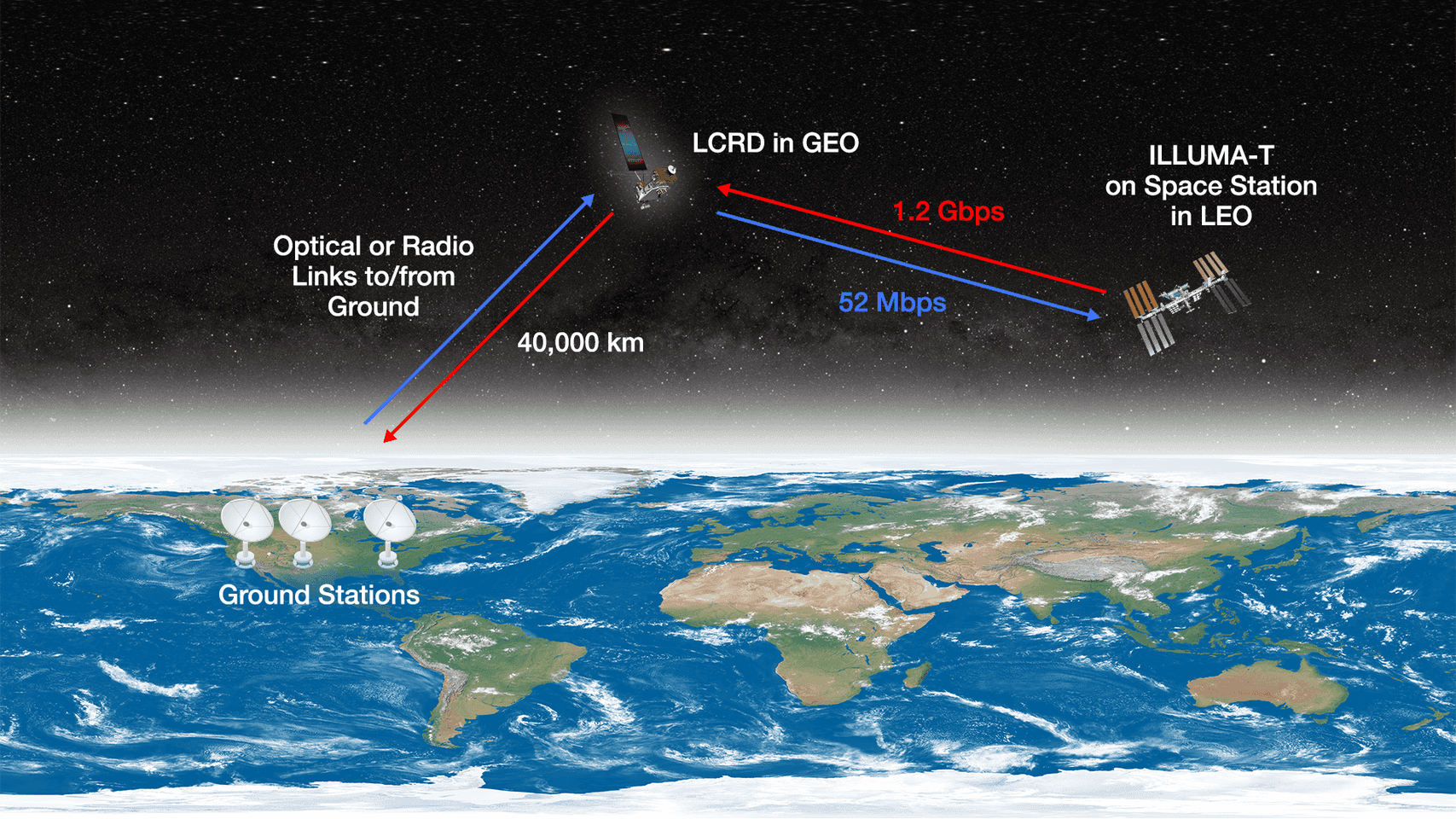Groundbreaking laser communications experiment flying to ISS on SpaceX cargo mission on Nov. 5
ILLUMA-T could help pave the way for more efficient communications between Earth and distant destinations like Mars.

Early next month, SpaceX will send a clutch of science experiments to the space station investigating a range of topics, from high-speed laser communications to rolling atmospheric waves on Earth.
A SpaceX Falcon 9 rocket, carrying the uncrewed Dragon spacecraft, is scheduled to launch toward the International Space Station (ISS) no earlier than Nov. 5, kicking off the CRS-29 cargo mission. Launch coverage will be available here at Space.com, via NASA Television.
"All of the science really supports the initiatives of NASA, as well as the ISS program, in supporting innovative research, being able to improve science capabilities on the International Space Station, and for future commercial and exploration programs," said Meghan Everett, deputy program scientist for the ISS program at NASA's Johnson Space Center in Houston, during a telephone press conference on Thursday (Oct. 26).
An example is the laser experiment, called ILLUMA-T ("Integrated LCRD Low-Earth-Orbit User Modem and Amplifier Terminal"), which aims to boost ISS communications while assisting future missions in deep space. ILLUMA-T is the remaining hardware item needed to transmit data through the agency's Laser Communications Relay Demonstration (LCRD) satellite that launched in 2021. When the system is ready, the satellite will relay the information to optical ground stations in Hawaii and California.
Related: SpaceX to launch final piece of NASA's 1st two-way laser communications relay
"Future missions have potentially exceptionally large data needs, and so we have to think about how we're going to meet those needs," NASA's Jason Mitchell said during the same press conference. "We all understand that more data means more discoveries," added Mitchell, the director for the advanced communications and navigation technologies division at NASA's space communication and navigation program. (That program is funding ILLUMA-T.)
NASA is looking to beef up its communications capabilities beyond those provided by the radio spectrum, which the agency has mostly been using for missions in the past 65 years. While the experiment is not the first laser demonstration in space, it will be the first two-way laser communications relay, agency officials have stated.
Breaking space news, the latest updates on rocket launches, skywatching events and more!
The system will use infrared light to transmit videos and images faster. NASA is counting on this technology to help amp up science returns over long distances, particularly at the moon and Mars, where the agency has plans for new human and robotic missions.
"One of our big goals in this demonstration is to demonstrate the pointing of that laser system … from the ISS, as it's traveling in its orbit," Glenn Jackson, acting project manager for ILLUMA-T at NASA's Goddard Space Flight Center near Baltimore, said in the phone call.
Given that the ISS is traveling around our planet at roughly 18,000 mph (29,000 kph), that's no small feat. Even small Earth lasers encounter pointing issues, which may be exacerbated in space, Jackson said. An example he cited: "If you have a laser pointer and you're trying to point that laser to a whiteboard or to your chalkboard in your classroom, sometimes you see that laser bouncing around a bit."
The ILLUMA-T system is smaller and less massive than radio gear, which allows more room for other science payloads or fuel on future missions. Less power use also provides more resources for science instruments drawing on the spacecraft's battery.
Other benefits include fewer issues in getting the required spectrum for launch – unlike radio, the optical spectrum is not as highly regulated, and getting a license is easier, Mitchell pointed out.
The hope is to reduce the risk and to bring laser communications to users across the solar system as the technology matures. For example, NASA's Artemis 2 crew that will circle the moon in 2024 plans to debut its own optical communications system "to understand what operational needs are for that [lasers] from a lunar perspective," Mitchell said.
Numerous partners are involved in the experiment. It is managed by NASA Goddard in partnership with two entities: NASA Johnson and the Massachusetts Institute of Technology (MIT) Lincoln Laboratory in Lexington, Massachusetts.
Select other experiments going up on CRS-29 include (in NASA's words):
- NASA's Atmospheric Waves Experiment (AWE). It uses an infrared imaging instrument to measure the characteristics, distribution, and movement of atmospheric gravity waves. These waves roll through Earth's atmosphere when air is disturbed, and play a role in defining the climate.
- Aquamembrane-3, an investigation from the European Space Agency (ESA). It continues evaluation of replacing the multi-filtration beds used for water recovery on the space station with a type of membrane known as an Aquaporin Inside Membrane.
- Gaucho Lung, sponsored by the ISS National Lab. It studies how mucus lining the respiratory system affects delivery of drugs carried in a small amount of injected liquid, known as a liquid plug.
- Rodent Research-20. "That study is designed to look at reproductive health in female mice," Everett said in the press conference. "We will look at the function of the ovaries during flight, and after flight … that will give us indication of the effects of microgravity on reproductive function. (It will) hopefully improve some of our knowledge of reproductive health here on the ground." The research uses hardware developed by NASA's Ames Research Center to safely house the animals.

Elizabeth Howell (she/her), Ph.D., was a staff writer in the spaceflight channel between 2022 and 2024 specializing in Canadian space news. She was contributing writer for Space.com for 10 years from 2012 to 2024. Elizabeth's reporting includes multiple exclusives with the White House, leading world coverage about a lost-and-found space tomato on the International Space Station, witnessing five human spaceflight launches on two continents, flying parabolic, working inside a spacesuit, and participating in a simulated Mars mission. Her latest book, "Why Am I Taller?" (ECW Press, 2022) is co-written with astronaut Dave Williams.

